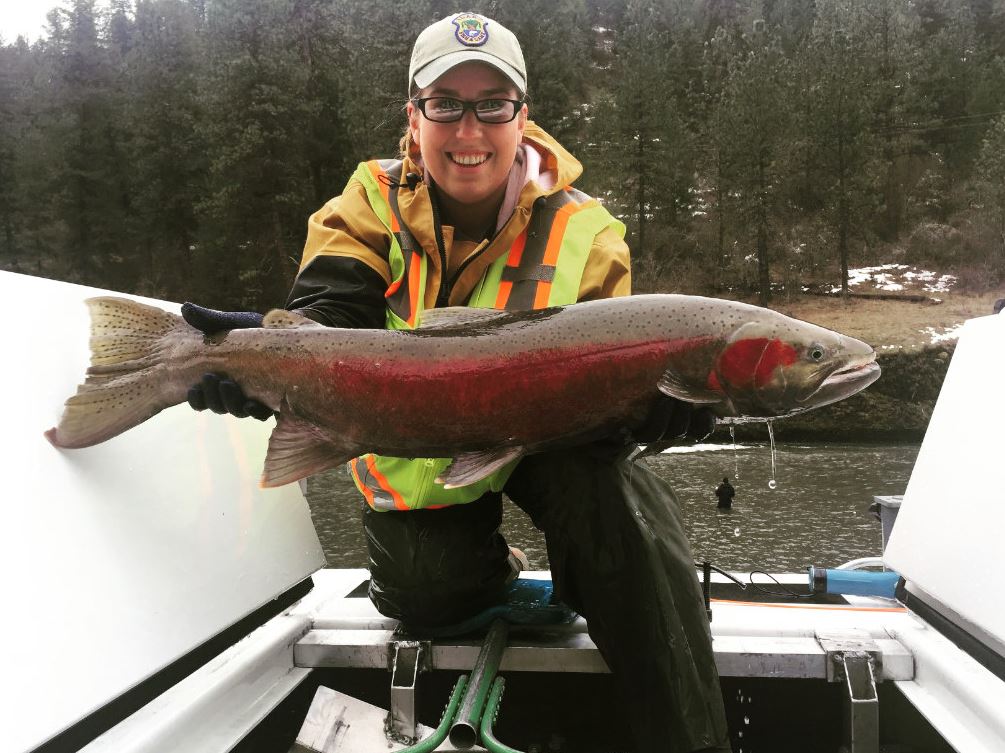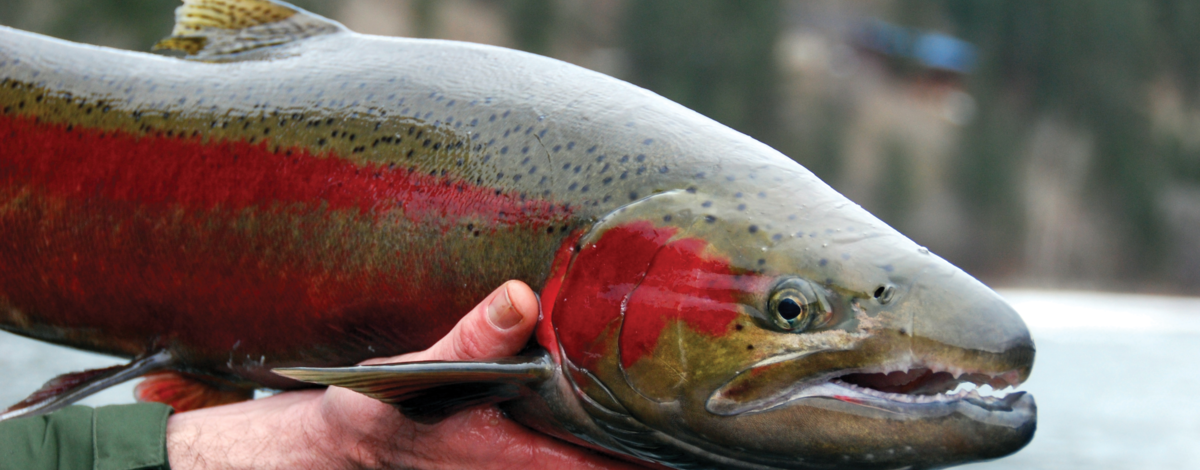“Do Idaho hatcheries clip the adipose fin on every steelhead they release?”
As with many things in our salmon and steelhead world, clipping or not clipping hatchery fish can get a little complicated. Some hatchery steelhead smolts are released with their adipose fin still intact on purpose. But, a lot of thought and coordination with our partners goes into making decisions for these programs. Here's a little more background on un-clipped steelhead that will help clear up some common questions.
On average over the past five years, 14% of the hatchery steelhead released from Idaho hatcheries have their adipose fin still attached. Often these fish are marked internally with a coded wire tag. But externally, they have all the fins of their wild counterparts. Often anglers can still tell these hatchery fish from true wild fish because their dorsal fin is worn down a little more from growing up in the hatchery. That’s why these fish are affectionately know as “stubbies” by some anglers.

An un-clipped hatchery steelhead from the South Fork Clearwater.
Why are some hatchery steelhead not clipped?
There are several reasons for this. Sometimes leaving steelhead un-clipped is a broodstock management tool. Since fish with an intact adipose fin cannot be harvested in sport fisheries these release groups return at a higher rate to the hatchery than adipose clipped fish. This increases our ability to collect these fish as broodstock and maintain the stocking programs that rely on them. This is the case with the upper Salmon River b-run steelhead program, where fish return to Pahsimeroi Hatchery.
In other cases, we have steelhead "supplementation programs" where we want hatchery steelhead to spawn with wild steelhead to increase the number of spawning fish in specific rivers . The South Fork Clearwater and East Fork Salmon rivers both have steelhead supplementation programs. Having un-clipped steelhead for these programs increases the chances those fish will make it back to spawn, which is one of the goals for supplementation programs.
Some important points regarding hatchery steelhead that are released with adipose fins:
1) We monitor all hatchery releases, including those with adipose fins, to ensure they return to the hatchery or the supplementation stream. All of Idaho’s hatchery steelhead are genetically marked, and we monitor if they show up in places we don’t expect to find them. Fortunately, they swim back to the correct places at a very high rate.
2) All hatchery steelhead programs in Idaho, except one, use only hatchery fish as broodstock. One release out of the East Fork Salmon River does use some wild fish in the hatchery program.
3) Idaho has large drainages (Lochsa, Selway, Middle Fork Salmon, and South Fork Salmon rivers and more) designated as wild steelhead management areas. There are no hatchery steelhead releases in these areas. Not even un-clipped ones.
4) While un-clipped hatchery steelhead cannot be harvested, we often see some of our best steelhead catch rates in sections where un-clipped hatchery fish are released. This results in fisheries that many of our steelhead anglers really enjoy.
For more information on Wild Salmon and Steelhead, click here.

